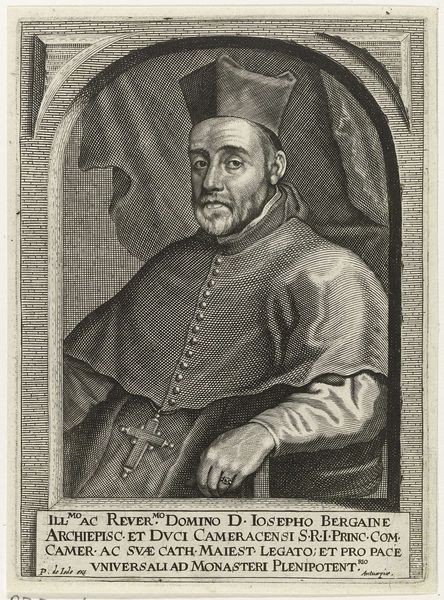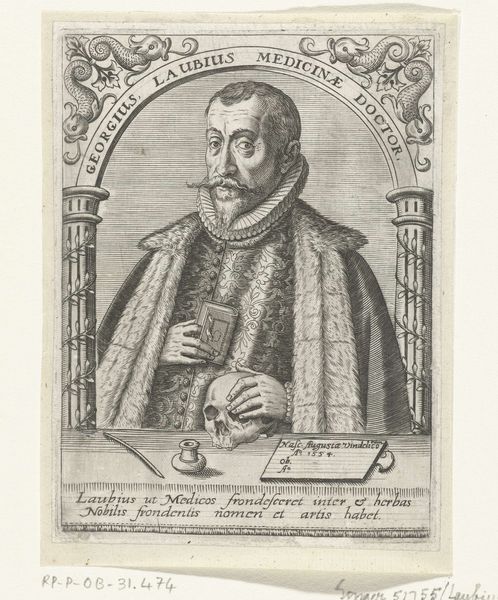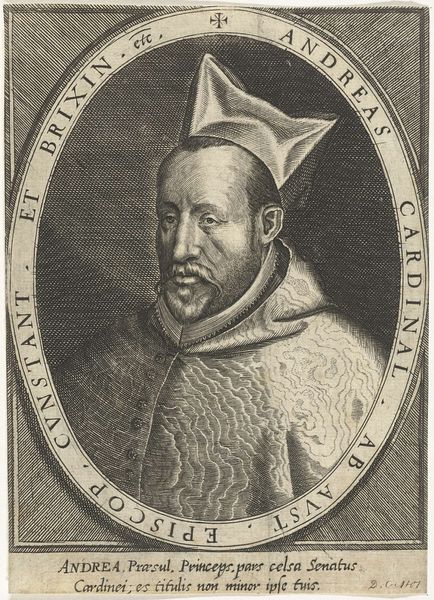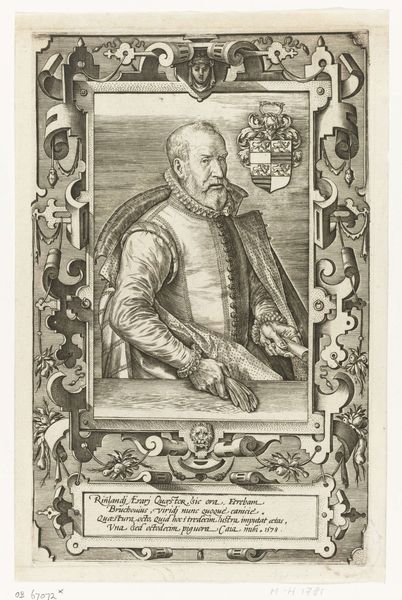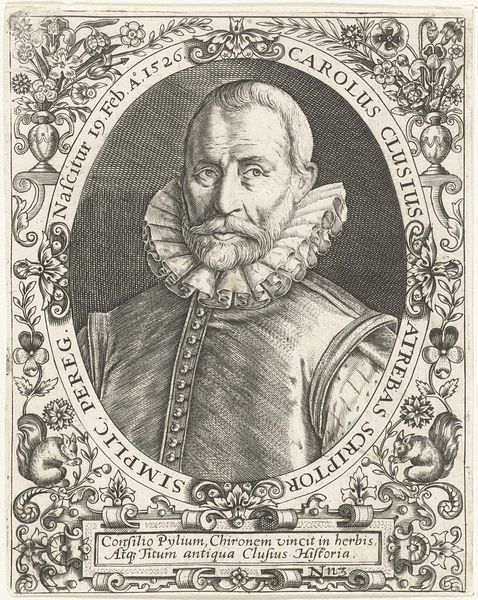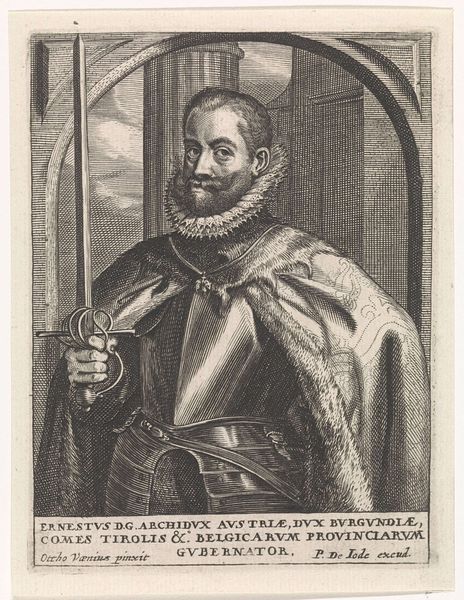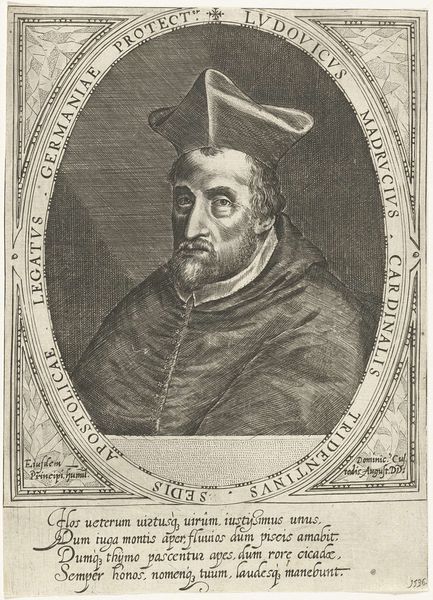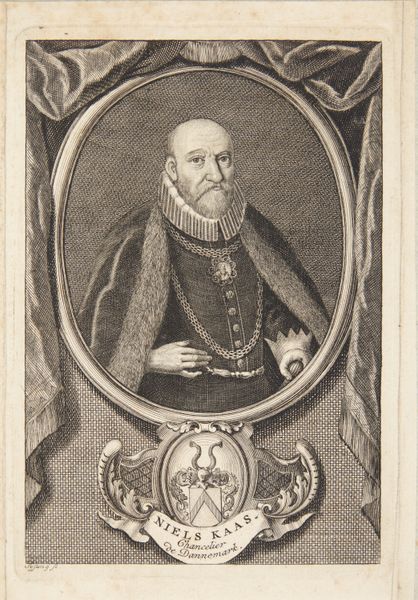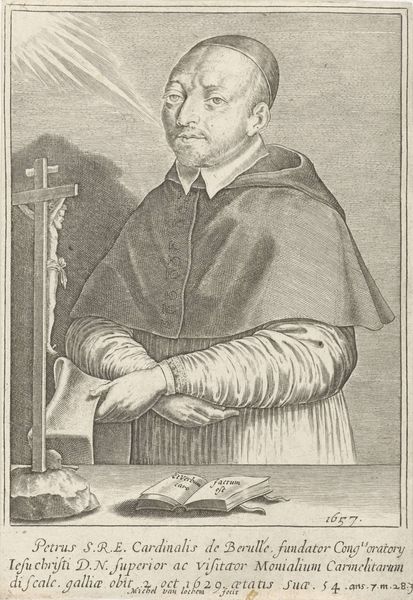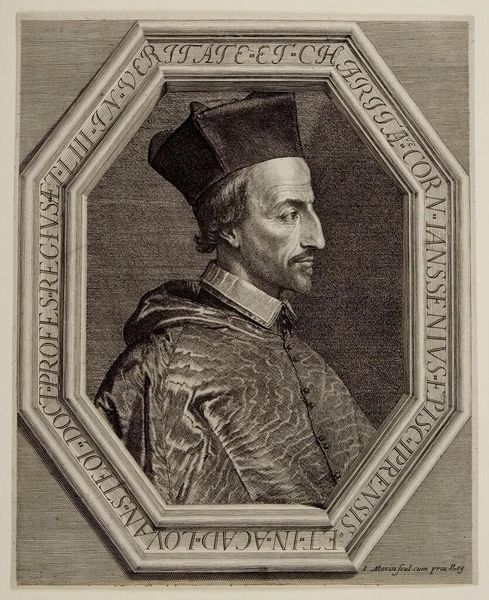
print, engraving
#
portrait
#
baroque
# print
#
11_renaissance
#
history-painting
#
engraving
Dimensions: height 198 mm, width 140 mm
Copyright: Rijks Museum: Open Domain
Curator: This engraving, "Portret van Andreas van Oostenrijk," comes to us from 1599. The artist here is Wierix, and you can find it currently housed in the Rijksmuseum. I find it striking. Editor: It feels heavy, doesn’t it? Like a somber, formal affair, with all the drapery and the subject’s… let’s say, intense gaze. There is an immediate feeling of power, authority, and perhaps a touch of melancholy. Curator: Andreas, positioned against the backdrop of what appears to be his domain, wields a simple baton. Though seemingly unadorned, this piece holds profound political and religious symbolism reflecting the power structures of the time. Notice his vestments as well, meticulously rendered. They are clearly communicating his status. Editor: Indeed. We must understand that these portraits weren't just about likeness. They were carefully constructed narratives of power and legitimacy. Andreas, Archduke of Austria and Cardinal, is carefully presenting his multifaceted authority—religious and political. His position as both speaks volumes about the intersection of church and state, the entanglement of spiritual and earthly dominance during that era. The backdrop alludes to privilege, but also the burden of leadership. The baton, perhaps ironically simple, emphasizes his control. It's not a decorative scepter; it's functional, suggestive of governance. Curator: Precisely. Wierix’s technique emphasizes the texture of fabric and depth, almost tactile to the eye. And even within this structured representation, I find the shadow and detail of Andreas’s face incredibly compelling. Editor: And let's not overlook the political context! 1599 places us firmly within the Counter-Reformation. Andreas, in his dual role, represents the Catholic Church’s attempt to reassert itself amidst rising Protestant influence. It is a propaganda piece of its time, though of a much softer kind than some that were common. Curator: It’s amazing how much history is held within a single engraved line. Even across centuries, it speaks to our human desire for something that transcends our own time here, even when representing some that have long gone from it. Editor: Agreed. And seeing him positioned in our modern space prompts essential conversations about inherited power and its continued effects on identity and governance now.
Comments
No comments
Be the first to comment and join the conversation on the ultimate creative platform.
